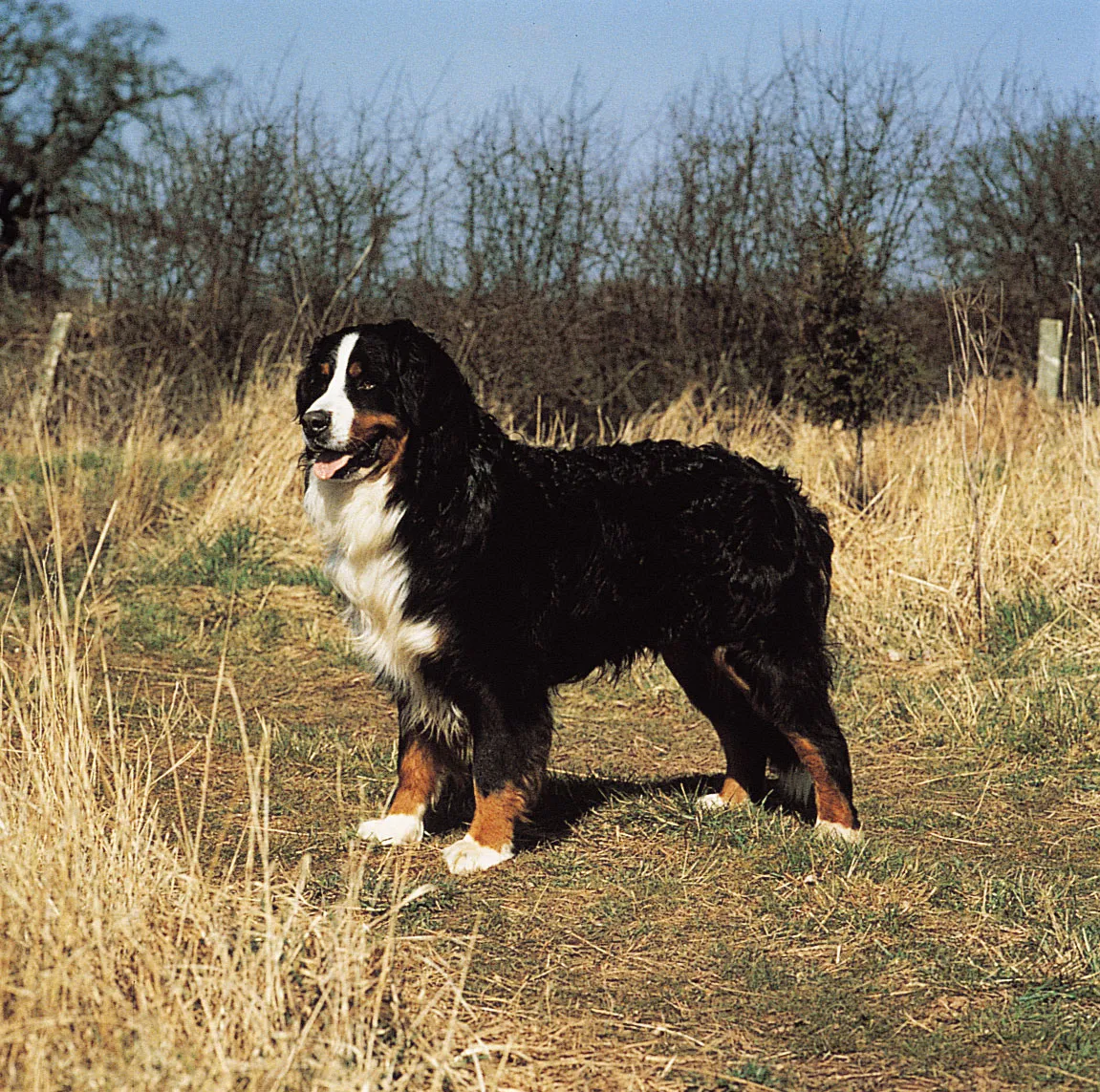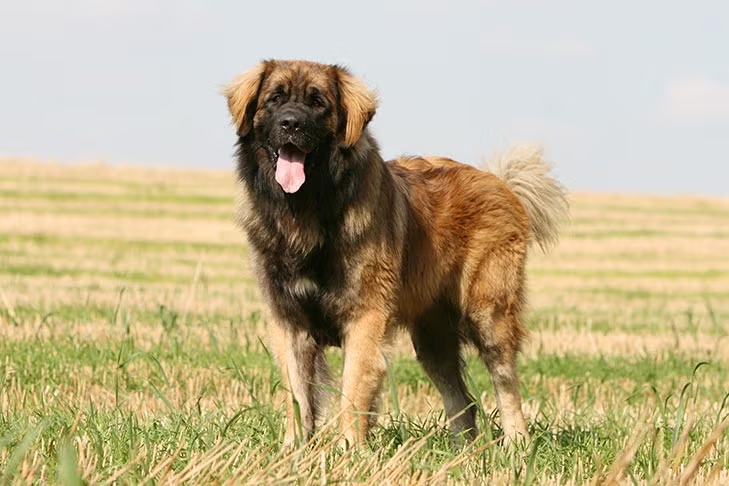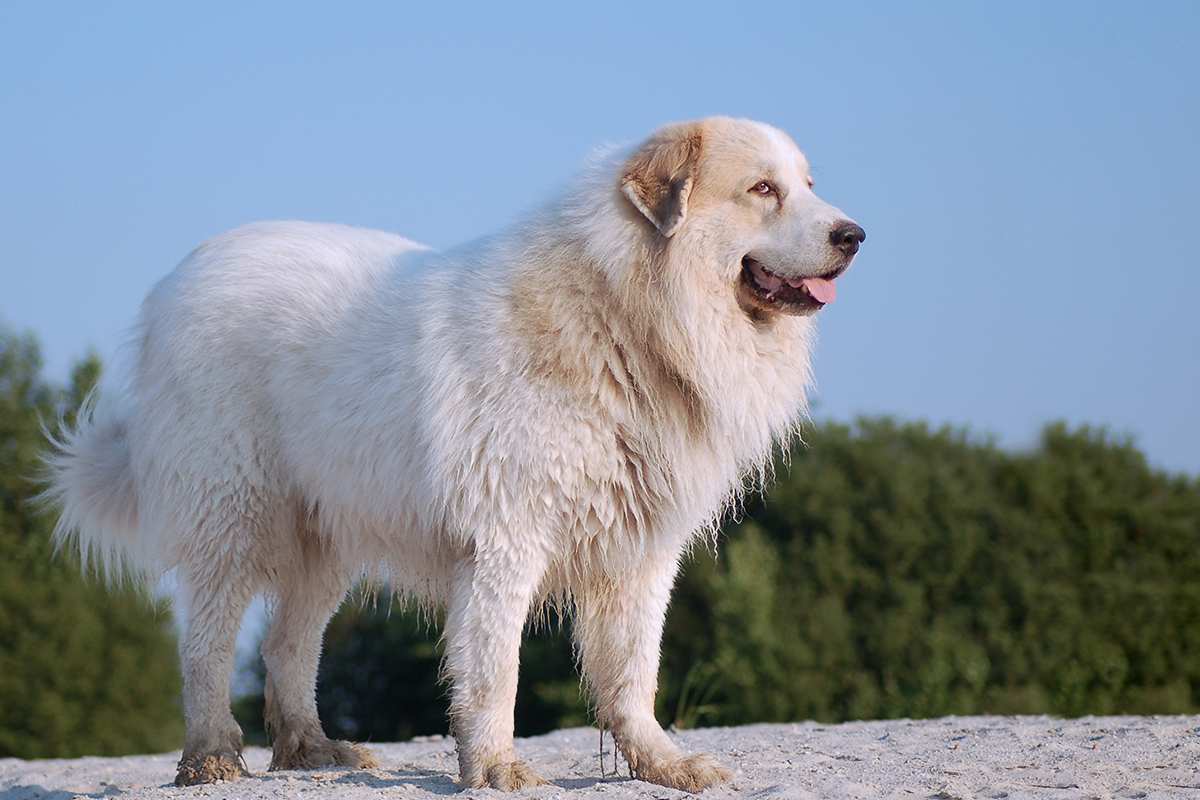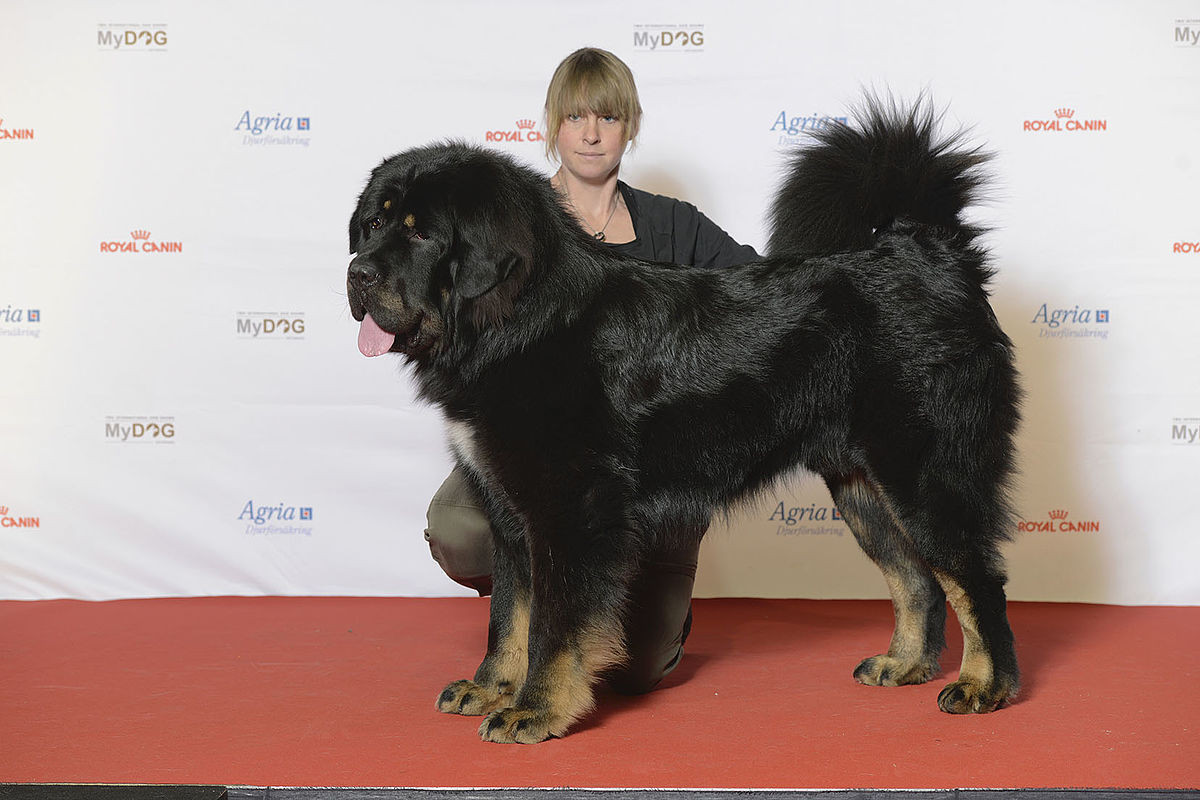Introduction: Love at First Sight
The first time I saw a Bernese Mountain Dog in person, I literally gasped. Walking through a dog-friendly farmers market, I spotted this massive, gorgeous creature with a gleaming tri-colored coat and the most soulful brown eyes I’d ever seen on an animal. The gentle giant was calmly allowing children to pet him while his proud owner explained that “Bernie” was just two years old and still growing. I was completely smitten.
That moment kicked off my obsession with Berners (as fans affectionately call them). These stunning Swiss mountain dogs combine showstopping good looks with some of the sweetest temperaments in the dog world. With their distinctive black, white, and rust tri-color pattern, they’re basically walking works of art that also happen to give amazing cuddles.
But here’s the thing about falling in love with Bernese Mountain Dogs – it comes with a heartbreaking reality check. These magnificent creatures have one of the shortest lifespans of any breed, typically only 7-10 years, with many sadly departing even earlier. This bittersweet aspect of Berner ownership has led to a saying in the community: “Three years a young dog, three years a good dog, three years an old dog – all else is a gift.”
Despite knowing their time with us is painfully brief, Berner enthusiasts keep coming back to the breed. After learning more about these incredible dogs, it’s not hard to understand why. There’s just something special about them that makes even their short lives worth every second of the inevitable heartbreak.
So grab a coffee (or maybe a tissue), and let’s dive into the world of the magnificent Bernese Mountain Dog – from their fascinating working history in the Swiss Alps to the practical realities of living with a 100-pound furball who thinks they’re a lapdog. By the end, you might just find yourself joining the ranks of dedicated Berner lovers who believe that sometimes, quality matters more than quantity when it comes to the time we have with these extraordinary dogs.
A Rich Swiss Heritage: From Farm Dog to Family Companion
Long before they were stealing hearts on Instagram, Bernese Mountain Dogs were earning their keep as hardworking farm dogs in the Swiss Alps. These powerful pups have a history stretching back roughly 2,000 years to when Roman soldiers crossed into Switzerland, bringing large mastiff-type dogs that would eventually be crossed with native Swiss farm dogs.
The breed we recognize today developed specifically in the canton of Bern, Switzerland (hence the name “Bernese”). In their homeland, they’re known as “Berner Sennenhund” – with “Senne” referring to Alpine pastures, “hund” meaning dog, and the full term translating roughly to “Alpine pasture dog from Bern.” They’re actually one of four Swiss mountain dog breeds, sometimes collectively called Sennenhunds, but the Bernese is the only one with a long coat.
What made Berners particularly valuable to Swiss farmers was their incredible versatility. These weren’t single-purpose working dogs – they were the Swiss Army knife of farm dogs! Their daily tasks included guarding property, herding cattle, and perhaps most famously, pulling carts loaded with milk, cheese, and other goods to market. This cart-pulling ability was especially valuable for smaller farmers who couldn’t afford horses, earning Berners the nickname “Cheese Dogs” in some regions.
Their gentle yet protective nature made them perfect for farm life – strong enough to work hard all day but gentle enough to be trusted around children and livestock. They lived closely with their farming families, developing the people-oriented temperament that characterizes the breed today.
By the late 19th century, however, the Bernese Mountain Dog faced a crisis. As farming practices modernized and other dog breeds became popular in Switzerland, the once-valued Berner declined dramatically in numbers. The breed might have disappeared entirely if not for the efforts of Professor Albert Heim and other Swiss dog enthusiasts who recognized the value of preserving this native treasure.
In 1907, the first Bernese Mountain Dog club was formed in Switzerland, establishing a standard for the breed and beginning its transition from working farm dog to recognized purebred. Berners made their way to the United States in the 1920s, with the American Kennel Club officially recognizing the breed in 1937. The Bernese Mountain Dog Club of America was established in 1968 to protect and promote the breed in the US.
Today, while few Berners pull milk carts for their daily work, many still participate in drafting and carting competitions that honor their working heritage. These events allow modern Berners to show off the pulling abilities that made their ancestors so valuable, keeping this important aspect of breed history alive while giving these working dogs a purposeful outlet for their natural talents.
Those Stunning Looks: The Unmistakable Berner Appearance
Let’s be honest – one of the first things that attracts people to Bernese Mountain Dogs is their absolutely stunning appearance. With their gleaming tricolor coats and powerful yet elegant build, Berners are about as photogenic as dogs come.
Size-wise, these are undeniably big dogs. Male Berners typically stand 25-27.5 inches at the shoulder and weigh between 80-115 pounds when fully grown. Females are slightly smaller but still substantial at 23-26 inches tall and 70-95 pounds. Despite their impressive size, Berners have a beautifully balanced frame that combines strength with grace.
But it’s their gorgeous coat that really makes them stand out in a crowd. The base color is a rich, gleaming black that covers most of the body. Against this dark background, crisp white markings create a dramatic contrast – typically forming what breed enthusiasts call a “Swiss cross” on the chest when viewed from the front. Most Berners also have white on their muzzle, feet, and tail tip. The third color in the pattern is a warm, rusty red or tan that appears as eyebrow spots, on the sides of the muzzle, on all four legs, and sometimes on the cheeks.
This tricolor pattern has practical origins – the white chest made the dogs visible to farmers working with them in the fields or in low light, while their dark base color absorbed heat from the sun during cold mountain days. Today, it’s simply one of the most distinctive and beautiful coat patterns in the dog world.
Beyond their coloration, Berners have large, somewhat rectangular heads with medium-sized triangular ears that hang close to the head. Their eyes are almost always a warm, medium to dark brown that perfectly complements their coloring and conveys their famously gentle expression. Their tails are bushy and typically carried low or level with their back when relaxed.
The Bernese coat is moderately long and can be straight or slightly wavy, with a thick undercoat that provides insulation in cold weather. Males typically develop more prominent ruffs around the neck and more luxurious feathering on the legs and tail than females, giving them an especially majestic appearance when fully mature.
One particularly endearing physical trait of many Berners is what fans call the “Berner lean” – their tendency to gently press their substantial weight against their favorite humans as a sign of affection. This charming habit perfectly captures their combination of impressive physical presence and sweet, affectionate nature.
While their stunning good looks may be what first catches your eye, Berner enthusiasts will tell you that their beauty is more than fur-deep. Their appearance somehow manages to perfectly reflect their temperament – substantial yet gentle, impressive yet approachable, and undeniably special.
Temperament: The Heart of a Gentle Giant
Behind those soulful brown eyes and impressive stature lies what truly makes Bernese Mountain Dogs special – their extraordinary temperament. Berners are often described as “gentle giants,” and it’s a characterization that couldn’t be more fitting.
At their core, Bernese Mountain Dogs are deeply devoted family companions. They form incredibly strong bonds with their people and genuinely want to be involved in all aspects of family life. This is definitely not a breed that thrives when relegated to the backyard – Berners need to be where their people are, whether that’s helping in the garden, accompanying you on outdoor adventures, or simply lounging in the living room. Many owners describe their Berners as “Velcro dogs” for their tendency to follow family members from room to room.
With children, well-bred Berners are typically patient, gentle, and protective. Despite their size, they seem to understand the need for gentleness around little ones and often position themselves as devoted guardians of the family’s children. Many Berner families share stories of their dogs gently tolerating all manner of handling from small children, from ear-tugging to amateur grooming sessions, with endless patience.
Most Bernese Mountain Dogs maintain a puppy-like playfulness well into adulthood, with many having a goofy, clownish side that can be utterly charming. They can be quite fun-loving in the right circumstances, but they also know when to settle down and be calm – a balance that makes them wonderful family dogs.
While they can be somewhat reserved with strangers initially – a trait that served them well as farm guardians – Berners are not typically aggressive or overly suspicious. With proper socialization, they learn to accept new people graciously, even if they save their most enthusiastic greetings for family members. Their moderate wariness combined with their deep, impressive bark made them excellent watchdogs on Swiss farms, and many modern Berners still fulfill this role by alerting their families to visitors.
Intelligence is another hallmark of the Bernese temperament. These dogs are quite smart and capable of learning a wide variety of commands and tasks. Their working heritage means they typically enjoy having jobs to do, whether that’s participating in dog sports, carrying a backpack on hikes, or simply learning new tricks. This intelligence is coupled with an eagerness to please that generally makes them responsive to training, especially when positive methods are used.
One temperament consideration for potential Berner owners is the breed’s sensitivity. These dogs form such close bonds with their people that they can be deeply affected by tension, stress, or conflict in the household. They don’t do well with harsh training methods or raised voices and may become anxious or withdrawn in high-stress environments.
This combination of intelligence, gentleness, devotion, and working ability makes for a uniquely wonderful companion – one whose temperament forms the heart of the breed’s enduring appeal despite the heartbreak of their short lifespans.
The Heartbreaking Reality: Understanding Their Short Lifespan
Now comes the hardest part of any honest conversation about Bernese Mountain Dogs – their tragically short lifespans. This aspect of the breed can’t be sugarcoated or ignored, as it’s a reality that every Berner owner must eventually face.
The average lifespan of a Bernese Mountain Dog is approximately 7-10 years, which is notably shorter than many breeds of similar size. Sadly, many Berners don’t even make it to the lower end of this range. A 2016 study published in BMC Veterinary Research found that the median life expectancy of Bernese Mountain Dogs in Switzerland was just 8.4 years, with females living slightly longer (8.8 years) than males (7.7 years).
The primary reason for this abbreviated lifespan is the breed’s unfortunately high rate of cancer, particularly a type called histiocytic sarcoma, which affects many Berners. Cancer is the leading cause of death in the breed, with studies showing that over half of Bernese Mountain Dogs die from some form of cancer.
Beyond cancer risk, Berners are prone to several other health conditions that potential owners should be aware of:
- Hip and Elbow Dysplasia: Like many large breeds, Bernese Mountain Dogs can suffer from improper formation of these joints, leading to pain and mobility issues.
- Gastric Dilatation-Volvulus (Bloat): This life-threatening emergency occurs when a dog’s stomach fills with gas and twists. Large, deep-chested breeds like the Bernese are at higher risk.
- Von Willebrand’s Disease: A blood clotting disorder that can cause excessive bleeding.
- Progressive Retinal Atrophy: A degenerative eye disease that can lead to vision loss.
These health challenges make it absolutely crucial to work with responsible breeders who conduct health testing on their breeding stock. Ethical breeders perform screenings for hip and elbow dysplasia, eye disorders, heart conditions, and may participate in cancer research efforts. The Berner-Garde Foundation maintains a health database specifically for tracking health issues in the breed.
For those who choose to adopt a Bernese Mountain Dog, being prepared for potential health expenses is important. Pet insurance can be a worthwhile investment for this breed with known health challenges. Regular veterinary check-ups, maintaining a healthy weight, appropriate exercise, and a quality diet can all help maximize your Berner’s health and lifespan.
Despite these health challenges, many Berner owners feel that the joy these dogs bring to their lives makes the inevitable heartbreak worthwhile. There’s a bittersweet saying in the Bernese Mountain Dog community that captures this sentiment: “The Bernese Mountain Dog gives you three years of puppyhood, three years of the best dog you’ll ever have, and three years that will break your heart.”
This shadow hanging over the breed has led to a particular philosophy among many Berner owners – an appreciation for quality over quantity when it comes to time with their beloved dogs. Knowing their time together will likely be short often inspires owners to make the most of every day, creating memories and experiences that will last long after their gentle giants have crossed the Rainbow Bridge.
Living With a Berner: Practical Considerations
Beyond their stunning looks, sweet temperaments, and health challenges, there are practical aspects of living with a Bernese Mountain Dog that anyone considering the breed should understand. Daily life with these magnificent dogs has its unique joys and challenges.
First, let’s talk about space. While Berners don’t need acres of land, they are large dogs who take up significant physical space in your home. A full-grown Bernese will need room to move around comfortably, a large dog bed (or access to furniture if allowed), and adequate space for feeding stations. Many enjoy sprawling out when relaxing, so open floor areas are appreciated. They do best with some outdoor space for bathroom breaks and play, though they shouldn’t be kept outside full-time as they’re very people-oriented dogs who need to be with their families.
Climate considerations are important for this thick-coated breed. Bernese Mountain Dogs thrive in moderate to cool climates that match their Swiss mountain heritage. They absolutely love snow and cold weather, often showing puppy-like enthusiasm for winter activities even as adults. However, their heavy double coats make them vulnerable to overheating in hot weather. If you live in a warm climate, air conditioning is essential, and outdoor activities should be limited to the cooler parts of the day during summer months.
That gorgeous tricolor coat does require maintenance, though not as much as some long-haired breeds. Plan for brushing sessions 2-3 times weekly with more intensive grooming during seasonal shedding periods when they “blow” their undercoats. Despite regular grooming, expect to find dog hair on your clothes, furniture, and floors – a good vacuum cleaner is a must for Berner owners! While not excessive droolers like some mastiff breeds, many Berners do drool somewhat, especially after eating or drinking.
Exercise needs for Bernese Mountain Dogs are moderate. Despite their working heritage, they’re not high-energy dogs that need hours of vigorous activity daily. Most adult Berners are content with 30-60 minutes of exercise each day, which could include walks, playtime in a yard, or gentle hikes. They particularly enjoy activities that involve their family members. Due to their risk of joint issues, strenuous exercise should be avoided until they’re fully grown (around 18-24 months), and high-impact activities like jumping should be limited throughout their lives.
Training is important for any dog, but particularly for one that will eventually weigh 80-115 pounds! Berners are intelligent and generally eager to please, responding well to positive reinforcement methods. Early socialization helps them develop confidence with new people, animals, and situations. Basic obedience training should begin in puppyhood, with special emphasis on leash manners – an adult Berner who pulls can be difficult to control even for a strong handler. Harsh corrections should be avoided with this sensitive breed.
One significant consideration is that Bernese Mountain Dogs form incredibly strong bonds with their people and don’t do well when left alone for extended periods. If your lifestyle involves being away from home for long stretches daily with no option for a dog walker or pet sitter, this might not be the breed for you. Separation anxiety can develop in Berners who are left alone too much.
Finally, there’s the financial reality. Beyond the initial purchase price from a reputable breeder (typically $1,800-$3,500), Bernese Mountain Dogs have ongoing costs that reflect their size and health needs. Food costs are significant for a large dog, quality veterinary care can be expensive (especially given the breed’s health challenges), and services like grooming or boarding often cost more for large breeds than small ones.
Despite these considerations, countless Bernese Mountain Dog owners will tell you that sharing their lives with these magnificent dogs is one of the most rewarding experiences possible. The love, joy, and companionship that a well-bred, well-raised Berner brings to a family is, for many, worth every hair on the couch and every dollar spent on care.
Is a Bernese Mountain Dog Right for You?
After learning about this magnificent breed – both their many wonderful qualities and their few but significant challenges – you might be wondering if a Bernese Mountain Dog would fit well into your life. Here’s a straightforward assessment to help you decide if this breed might be your perfect match:
You might be well-suited for a Bernese Mountain Dog if:
- You’re looking for a gentle, affectionate family dog with a calm indoor demeanor
- You live in a moderate to cool climate, or have reliable air conditioning for hot weather
- You have adequate space in your home for a large dog
- You’re home frequently or can arrange for your dog not to be alone for long periods
- You can provide consistent but gentle training and socialization
- You’re prepared for regular grooming and some household hair
- You’re financially prepared for the costs of feeding and caring for a large breed with health considerations
- Most importantly, you’re emotionally prepared for a potentially shorter than average canine lifespan
A Bernese Mountain Dog might not be the right choice if:
- You live in a very hot climate without adequate cooling options
- You’re away from home for long hours with no option for dog care
- You’re extremely house-proud or bothered by dog hair
- You’re looking for a highly energetic jogging or running companion
- You want an independent dog that doesn’t need much attention
- You’re unprepared for potential significant veterinary expenses
- You want a guard dog with strong protective instincts (Berners will alert but are typically too friendly for true guarding)
- You’re not emotionally prepared for the possibility of saying goodbye after a shorter than average lifespan
If you’ve determined a Bernese Mountain Dog might be right for you, the next step is finding a reputable source for your new companion. Working with responsible breeders who conduct thorough health testing, raise puppies in their homes with appropriate socialization, and provide lifetime support is essential for a breed with the Berner’s health challenges.
The Bernese Mountain Dog Club of America maintains a breeder directory that can help you start your search. Expect to be thoroughly screened by reputable breeders who care deeply about where their puppies go. A long waiting list is common for well-bred Berners, so patience is necessary.
Adoption is another wonderful option. While purebred Berners aren’t commonly found in general shelters, there are breed-specific rescue organizations dedicated to rehoming Bernese Mountain Dogs. The BMDCA website lists regional Bernese Mountain Dog rescues that may have both purebred Berners and Bernese mixes available for adoption.
Whichever path you choose, take your time with research and preparation. Meet dogs in person if possible, ask lots of questions, and be honest about your lifestyle and expectations. A responsible breeder or rescue will be just as concerned about finding the right match as you are – they want their dogs to go to homes where they’ll thrive for however long their lives may be.
Conclusion: A Love Worth the Heartbreak
The Bernese Mountain Dog presents a beautiful paradox – a breed that offers some of the deepest joys of dog ownership alongside one of its most painful realities. Their magnificent appearance, gentle souls, and loving hearts come paired with the knowledge that your time together will likely be shorter than you’d wish.
Yet the thousands of devoted Berner owners worldwide have made their choice – that a few years with these extraordinary dogs is worth the inevitable heartbreak. As the popular saying goes in Berner circles, “They may not be in our lives for long, but they make our lives immeasurably better while they’re here.”
There’s something profoundly moving about the relationship between Berners and their people. Perhaps it’s that the awareness of their shorter lifespans inspires a special kind of appreciation – a mindfulness about making memories, taking photos, and savoring ordinary moments that might otherwise pass unnoticed. Many Berner owners speak of learning important life lessons from their dogs – about living in the present, finding joy in simple pleasures, and loving with your whole heart even when you know that heart will eventually break.
From their origins as hardworking farm dogs in the Swiss Alps to their current status as beloved family companions, Bernese Mountain Dogs have maintained their essential character – gentle, loyal, hardworking, and deeply devoted to their people. Their rich heritage shines through in today’s Berners – in their strength, their work ethic, their family devotion, and their gentle souls.
For those who choose to welcome a Bernese Mountain Dog into their homes and hearts, the journey may be shorter than with some other breeds, but it will be filled with immeasurable joy, laughter, and love. The pawprints these magnificent dogs leave on our hearts last far longer than their physical presence in our lives – a legacy as enduring as the Swiss mountains that shaped them.
As one Berner owner beautifully put it: “The pain of losing them is the price we pay for the privilege of having known them.”




